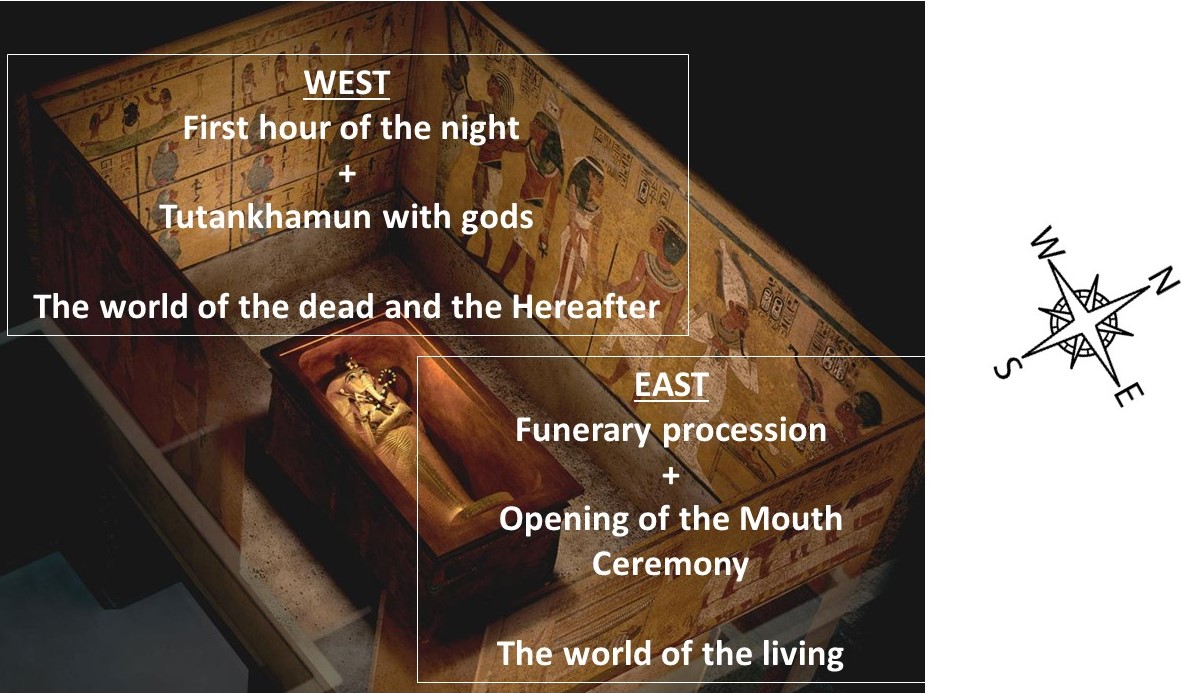In Ancient Egypt the iconography on the walls of the tombs were crucial for the dead’s resurrection.
The iconography in the tomb of Tutankhamun was strong enough for granting the king’s regeneration. Both, the scenes and its emplacement had a sense.
Orientation of the Tutankhamun iconography.
The ancient Egyptian artists selected for this king a group of images which evoked the first moment of Tutankhamun’s regeneration. So, his entrance into the Hereafter granted his resurrection, and therefore, his eternity.
But also the artists selected the emplacement for each image.
If we observe carefully the decorative ensemble we note two main parts: the east side and the west side.

The iconography in the tomb of Tutankhamun had an East-West orientation.
The east side.
In this part of the tomb of Tutankhamun the artists depicted the funerary procession and the opening of the mouth ceremony.
In the belief of Ancient Egypt the East was the place of the sunrise, the light, so the East was related to the world of the living. For that reason cities and temples to the divinities (like Karnak or Luxor) were set up at the East side.
In the tomb of Tutankhamun the East side was also reserved to scenes of the world of the living. That is why they depicted the funerary procession and the opening of the mouth ceremony. Beacuse both practices belonged to the world of the living and happened during the burial ceremony.
The West side.
This part of the tomb contains scenes of the king getting into the Underworld and in the company of some divinities.
The West side was the place of the sunset, the darkness, so the West in Ancient Egypt was related to the world of the dead and the Hereafter. For that reason the necropolis and the funerary temples were in the West side of the Nile.
It makes sense, therefore, that the iconography of West end in the tomb of Tutankhamun contains the images of the pharaoh with deities involved in his resurrection (Nut, Anubis, Isis and Osiris) and the first Hour of the Night of the Amdouat; that is, the moment when the resurrection of Tutankhamun begins.